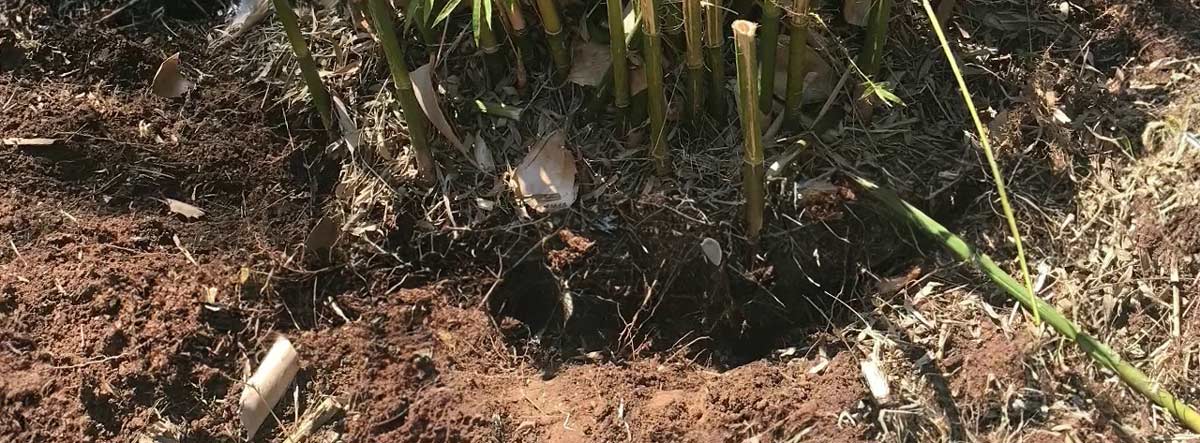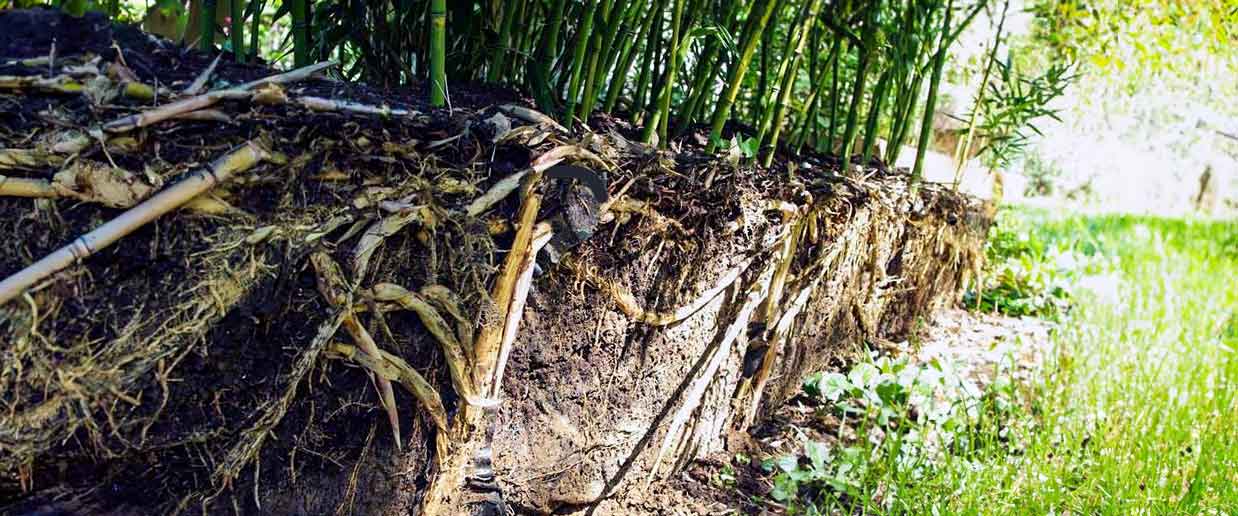Bamboo, with its graceful appearance and rapid growth, can bring an exotic touch to any landscape. However, its invasive nature and relentless spread can quickly turn it into a nuisance for homeowners. This comprehensive guide delves into the intricacies of bamboo removal, providing insights on how to remove bamboo, eradicate its roots, and prevent its unwelcome expansion. From understanding the bamboo root system to employing effective control measures, we’ll equip you with the knowledge you need to regain control of your outdoor space.
Bamboo Removal: Getting Started
Bamboo removal might seem daunting, but with the right approach, you can effectively eliminate this persistent plant from your yard. It’s essential to start by cutting down the bamboo canes as close to the ground as possible. This initial step reduces the plant’s energy reserves and hampers its ability to regrow. A sharp pruner or saw should be used to make clean cuts and prevent splintering. Once the canes are cut, be sure to remove all leaves and debris around the area to further discourage regrowth.
How to Remove Bamboo Roots
Removing bamboo roots is a crucial step in ensuring the plant’s permanent elimination. This task requires a combination of patience and determination. Begin by digging around the bamboo clump, gradually exposing the root ball beneath the soil. As you dig deeper, use a shovel to loosen the surrounding soil and gain better access to the roots. In the case of larger root systems, a grubbing hoe can be a useful tool. With persistence, you’ll be able to extract the roots manually, leaving no room for regrowth.
How to Get Rid of Bamboo Roots Permanently
When it comes to getting rid of bamboo roots permanently, thoroughness is key. After removing the main root ball, it’s crucial to meticulously inspect the surrounding area for any remaining roots or root fragments. Even the tiniest fragment left behind can lead to the resurgence of bamboo. To prevent accidental spread, ensure that all root material is properly disposed of. By taking these measures, you can significantly increase the chances of successfully eradicating bamboo from your yard.

Preventing Bamboo Spread
Understanding how bamboo spreads is essential to effectively contain its growth and prevent it from taking over your outdoor space. Bamboo’s method of expansion involves an intricate network of underground rhizomes. These root structures allow bamboo to colonize new areas rapidly, making containment a challenging endeavor.
Understanding Bamboo Roots and Root System
To combat bamboo’s spread effectively, it’s crucial to have a solid understanding of its root system. Bamboo roots can grow surprisingly deep into the ground, depending on factors such as soil type and bamboo species. Some bamboo varieties develop roots that can extend to depths of 2 to 3 feet. Gaining insights into the depth and extent of the root system is vital for devising successful containment strategies.
How Deep Do Bamboo Roots Grow?
The depth to which bamboo roots grow can vary based on factors such as species and soil conditions. Under optimal conditions, bamboo roots can extend up to 3 feet beneath the soil surface. This extensive root system plays a significant role in the plant’s resilience and rapid spread.
Strategies for Bamboo Control
Effectively controlling bamboo growth requires a multi-faceted approach, involving techniques to both contain and manage its spread. Implementing these strategies will help you regain control over your yard and prevent further bamboo encroachment.

How to Contain Bamboo
Containing bamboo is a vital step in preventing its spread. Installing a rhizome barrier made from high-density polyethylene is a powerful method for creating an underground barrier. This barrier blocks the lateral spread of bamboo rhizomes, effectively halting their growth beyond the barrier’s boundaries. For maximum effectiveness, it’s essential to install the barrier to a depth of at least 2 feet to ensure that the rhizomes can’t bypass it.
How to Keep Bamboo from Spreading
Maintaining bamboo growth involves consistent vigilance. Regularly monitor your yard for any new shoots that may emerge. As soon as new shoots are spotted, promptly remove them. This practice not only prevents the bamboo from spreading but also weakens the plant over time, making it more manageable.
Bamboo Barrier: A Powerful Solution
The bamboo barrier is a powerful solution for controlling its spread. This physical barrier prevents the rhizomes from extending beyond a designated area. Proper installation is essential to ensure its effectiveness. By combining the barrier with other control methods, you can significantly reduce the chances of bamboo escaping its designated space.
Expert Tips for Eradicating Bamboo
While bamboo removal might seem challenging, following expert tips and strategies can make the process more manageable and effective. These methods can help you eliminate bamboo plants and prevent their regrowth.
- Precision Cutting: When cutting down bamboo canes, aim for precision. Use a sharp pruner or saw to make clean cuts as close to the ground as possible. This initial step weakens the plant and prepares it for further removal.
- Swift Herbicide Application: After cutting down canes, apply a broad-spectrum herbicide to the freshly cut stumps. The plant will absorb the herbicide and distribute it to the roots, ensuring a comprehensive kill.
- Systemic Root Treatment: For bamboo roots, opt for a systemic herbicide. Apply it directly to exposed rhizomes after removing visible shoots. This method allows the herbicide to travel through the root system, effectively eliminating the plant.
- Regular Monitoring: Stay vigilant by monitoring your yard for new bamboo shoots. Promptly remove any emerging shoots to prevent the plant from regaining strength.
- Thorough Root Removal: When extracting bamboo roots, be thorough. Even small fragments can lead to regrowth. Ensure the entire root system is removed, leaving no room for resurgence.
How to Kill Bamboo Plants
Killing bamboo plants requires a combination of proper timing and targeted action. After cutting down the bamboo canes, apply a broad-spectrum herbicide directly to the freshly cut stumps. This method allows the plant to absorb the herbicide, which then travels through the plant and down to the roots, effectively killing it.
How to Kill Bamboo Roots
Eliminating bamboo roots is a challenging endeavor due to their extensive underground network. After removing the visible shoots, apply a systemic herbicide directly to the exposed rhizomes. The herbicide will gradually travel through the root system, delivering a lethal dose to the entire plant.
How to Stop Bamboo from Spreading
Halting bamboo’s spread requires a comprehensive approach that combines multiple strategies. Regularly monitor your yard for new shoots and promptly remove them to weaken the plant’s growth. Implement physical barriers and herbicides to further inhibit its expansion and ensure long-term control.
FAQs (Frequently Asked Questions)
Curious about the nuances of bamboo removal? Here are answers to some frequently asked questions that can help clarify the process and guide your efforts.
Yes, bamboo can be removed without resorting to killing it. By cutting down the canes and meticulously digging up the roots, you can eliminate bamboo while keeping it alive. However, thoroughness is crucial to prevent regrowth.
The process of completely removing bamboo can span several months to a year. The timeline varies based on the size of the bamboo grove and the effectiveness of the removal methods employed.
While bamboo removal can be tackled as a DIY project, it’s worth noting that larger bamboo stands and more extensive root systems might require professional assistance. Seeking expert help can ensure a successful removal process.
Yes, bamboo can indeed spread to neighboring yards if not adequately contained. Installing a barrier between properties can effectively prevent the spread of bamboo rhizomes and minimize the risk of encroachment.
Trimming bamboo shoots can indeed stimulate new growth. However, consistent pruning weakens the plant over time. By removing new shoots immediately, you can control the plant’s spread more effectively.
